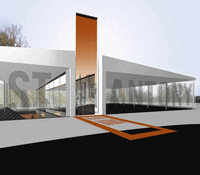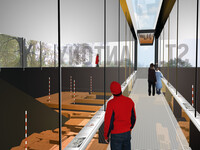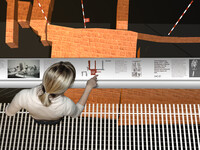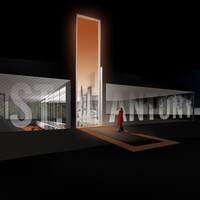



St. Antony Shelter - Archaeological Protective Structure
Incision. The design is characterized by the balance between industrial history and the course of the landscape, between the past and the present: - the industrial history becomes spatial in the overarching gesture of the simple roof reminiscent of factory buildings; - The flowing landscape can be experienced through the striking incision in the roof structure.
Landscape. The Elpenbach and its natural area represent an essential quality for the site and remain present to the visitor even in the excavation area through the incision of the protective roof. The chosen bridge construction of the footbridge should not stand in the way of a later exposure of the Elpenbach. Until then, the footbridge symbolically replaces the scenic flaw.
Entrance and symbolic place. The main entrance will be placed on the historic site of the former blast furnace of St. Antony. In this way, the visitor directly experiences the industrial-historical starting point of the Ruhr area. Due to the central location and the resulting visual relationships to the director’s house, pond and the excavation field, he understands the production line of the hut in St. Antony and its scenic background of pond and Elpenbach.
The site of the former blast furnace is lost. It is inscribed as a trace in the ground. The revolving portal spatially spans the historic site between roof and floor when it is open and symbolically recovers it. At night the space in between becomes a light space.